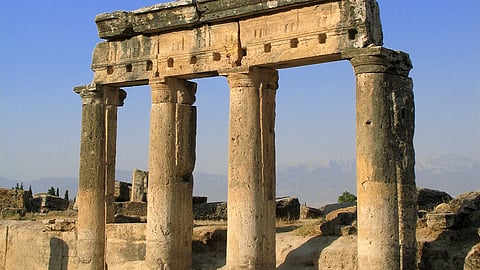
- Destinations
- Experiences
- Stay
- What's new
- Celebrating People
- Responsible Tourism
- CampaignsCampaigns
- Subscribe
- Buy Now

The sun-drenched shores of the Mediterranean were briefly unsettled on May 3 when two earthquakes struck near popular tourist destinations. A powerful 6.2-magnitude quake hit near the Dodecanese Islands, close to the Türkiye border, while a second tremor measuring 5.8 rattled the coastal town of Marmaris, Türkiye and the Greek island of Rhodes.
The earthquakes occurred almost simultaneously, prompting authorities in both countries to begin immediate assessments of the region. While the tremors startled many, damage appears minimal, and both destinations continue to function normally, with airports and transportation services unaffected.
In Türkiye's Marmaris, known for its waters, chaos briefly replaced calm as residents and visitors scrambled out of buildings in panic. Reports indicate nearly 70 people were injured, many from leaping from windows or balconies in fear. One tragic fatality involved a 14-year-old girl who later succumbed to her injuries.
Across the Aegean on Rhodes, similar scenes unfolded. Tourists and locals alike spent hours outdoors, reluctant to re-enter buildings until the all-clear was given.
Such events are not unprecedented for destinations like Marmaris and Rhodes, perched along active seismic zones. Yet, they rarely interfere with long-term travel or tourism.
If you're planning a trip to a region with occasional seismic activity, such as the eastern Mediterranean, here are some smart, traveller-friendly precautions to keep in mind:
Before you travel, check your government’s official travel advisories for seismic alerts or emergency updates. Apps like MyShake or Earthquake Network can provide real-time tremor alerts.
Upon checking into your hotel, take a moment to locate emergency exits. Ask the reception about evacuation procedures—most hotels in quake-prone regions are trained and equipped to handle such situations.
It’s always a good idea to carry a mini emergency kit with you: a flashlight, power bank, basic first-aid, bottled water, and a digital or physical copy of your ID and travel insurance.
Many earthquake injuries result from rash decisions—like jumping out of buildings. If indoors during a quake, follow the “Drop, Cover, and Hold On” method. Move away from glass windows and heavy furniture.
Choose travel insurance that includes coverage for natural disasters, medical treatment, and evacuation if necessary.
(With inputs from multiple sources)
